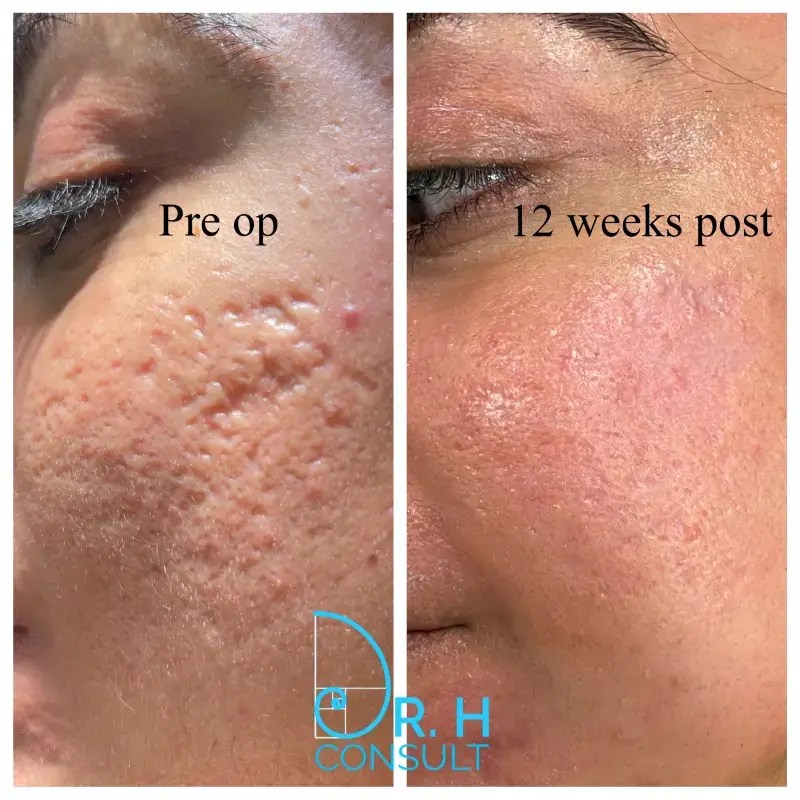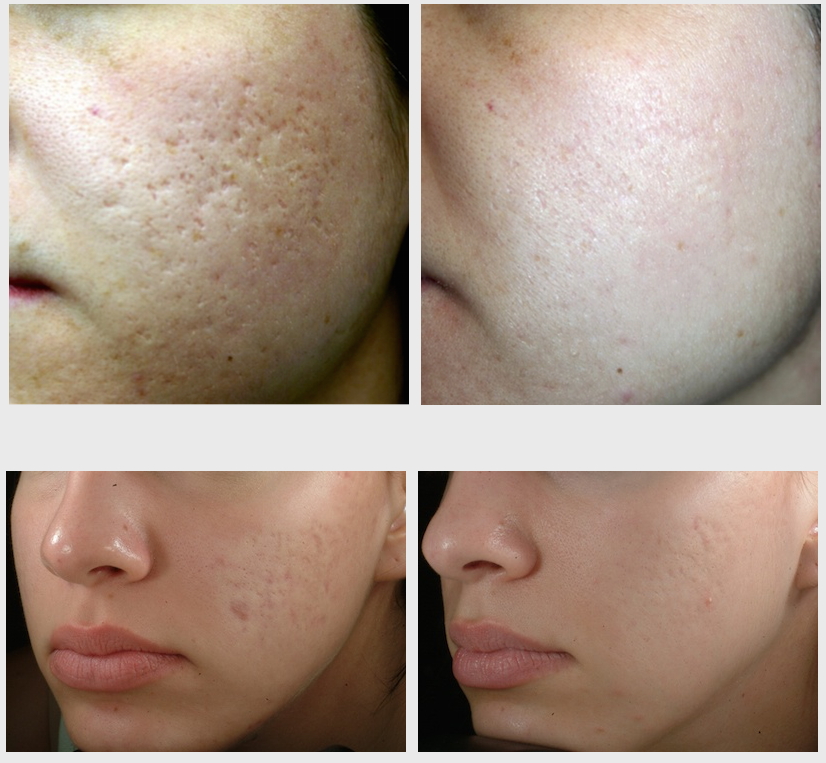Targeted Acne and Acne Scars Treatment: Redeem Your Clear Skin
Wiki Article
Recognizing the Different Skin Problem and Reliable Treatment Choices for Acne Scars
Acne scars stand for an intricate interaction of skin disease that considerably effect people' self-esteem and overall skin health. Understanding the distinct sorts of acne scars-- atrophic and hypertrophic-- alongside their underlying reasons, is crucial for figuring out reliable therapy methods. Different restorative choices exist, varying from innovative skin-related procedures to natural solutions. Nonetheless, the efficiency of these therapies frequently hinges on customized analyses by qualified specialists. As we explore the landscape of acne scar administration, it comes to be obvious that the journey towards clearer skin might entail even more than just topical solutions.Kinds of Acne Scars
The 2 primary classifications of acne marks are atrophic and hypertrophic scars. These marks are more classified into three subtypes: ice choice marks, which are deep and narrow; boxcar scars, which are larger and have well-defined sides; and rolling marks, which create a wave-like appearance due to unequal skin appearance.On the other hand, hypertrophic scars arise from an overproduction of collagen during the healing process, bring about increased areas on the skin. These marks are frequently solid and can vary in shade, occasionally appearing red or darker than the surrounding skin.

Sources Of Acne Scarring
Marking happens as a result of the body's natural recovery action to inflammation and injury triggered by acne sores. When acne types, it triggers an inflammatory feedback, causing the release of various cytokines and development elements that promote recovery. This procedure can often lead to excessive cells formation or poor repair work, resulting in marks.The key root causes of acne scarring consist of the seriousness of the acne itself, period of the lesions, and specific skin types. Extreme inflammatory acne, such as blemishes and cysts, is more probable to cause scarring because of much deeper tissue damages. Additionally, inappropriate handling of acne lesions, such as squeezing or selecting, can intensify tissue injury and swelling, increasing the probability of scarring.
Genetic tendency additionally plays a significant duty; people with a family background of scarring go to a higher threat. Moreover, skin type and color can affect mark formation, as darker skin tones might experience post-inflammatory hyperpigmentation, while lighter skin might develop atrophic scars.

Therapy Alternatives for Scarring
Reliable therapy alternatives for acne scarring differ relying on the kind and extent of the marks. Usually classified right into atrophic, hypertrophic, and keloid marks, these conditions require tailored approaches for optimal outcomes.For atrophic marks, which are identified by a loss of cells, treatments such as chemical peels, microdermabrasion, and laser treatment are generally used. These techniques promote skin renewal and stimulate collagen manufacturing, therefore enhancing skin structure. Subcision, a minimally invasive procedure, can additionally be reliable by separating fibrous bands beneath the skin.
Hypertrophic and keloid scars can be extra testing to treat. Options consist of corticosteroid shots to minimize inflammation and flatten the scars. acne scars. In some instances, cryotherapy or laser treatment might be advised to decrease their look
Surgical options are readily available for serious scarring, where excision or skin grafting might be essential. It's necessary for individuals to seek advice from a skin doctor to examine their specific scar type and discuss one of the most ideal treatment strategy. Integrating multiple treatments commonly yields the very best results, ensuring that each individual's unique skin disease is attended to effectively.
Natural Home Remedy and Natural Solutions
Natural solutions and natural remedy can give an easily accessible method for individuals looking for to improve the appearance of acne marks. Various components located in the home kitchen area have actually shown potential benefits in boosting skin texture and promoting recovery.Applying fresh aloe vera gel directly onto the scars can help enhance skin hydration and reduce redness. Honey possesses natural antibacterial and moisturizing high qualities that can help in mark recovery.
An additional reliable alternative is lemon juice, which works as an all-natural exfoliant and can lighten hyperpigmentation. It needs to be made use of meticulously, as it might create photosensitivity. Oat meal masks are likewise helpful; their mild exfoliation can help get rid of dead skin cells while relaxing irritability.
Essential oils, such as tea tree oil and lavender oil, can further support mark recovery because of their antimicrobial residential properties. It is vital to do a patch test before using any kind of treatment to guarantee there are no unfavorable reactions. These all-natural options can be a complementary approach in the trip to reduce acne scars.
Preventing Future Scarring
Taking on an aggressive method to this link skincare can dramatically minimize the danger of developing future acne marks. One of the crucial techniques is to manage acne properly as it occurs (acne scars). This involves making use of non-comedogenic skincare items and medicines suggested by skin specialists that target acne without irritating the skin. Routine cleaning, exfoliation, and hydration can aid preserve skin wellness and avoid clogged up pores.Additionally, avoiding the lure to look here squeeze or choose acne lesions is critical, as this can lead to swelling and succeeding scarring. Instead, people need to concentrate on applying topical treatments that advertise recovery and lower inflammation. Ingredients such as salicylic acid, benzoyl peroxide, and retinoids are known for their efficiency in taking care of acne and decreasing marks.

Lastly, keeping a healthy and balanced diet abundant in antioxidants and remaining moisturized assistances skin regrowth. By implementing these preventative steps, people can considerably reduce their danger of future scarring and advertise total skin wellness.
Verdict
In conclusion, a thorough understanding of acne marks, encompassing both atrophic and hypertrophic types, is crucial for efficient therapy techniques. Appointment with a skin specialist remains imperative to create personalized techniques that take into consideration specific skin kinds and mark seriousness, ultimately enhancing the efficacy of mark administration techniques.Acne marks stand for Get More Info a complicated interplay of skin problems that considerably impact people' self-esteem and general skin health. The 2 primary groups of acne scars are hypertrophic and atrophic scars. These marks are further identified into 3 subtypes: ice pick scars, which are narrow and deep; boxcar marks, which are larger and have distinct edges; and rolling marks, which develop a wave-like appearance due to irregular skin structure.
A thorough examination with a dermatologist can help establish the most suitable treatment, taking right into account the individual's skin kind, mark seriousness, and general skin health.
Assessment with a skin doctor remains necessary to devise individualized strategies that consider individual skin types and scar extent, ultimately enhancing the effectiveness of mark monitoring techniques.
Report this wiki page